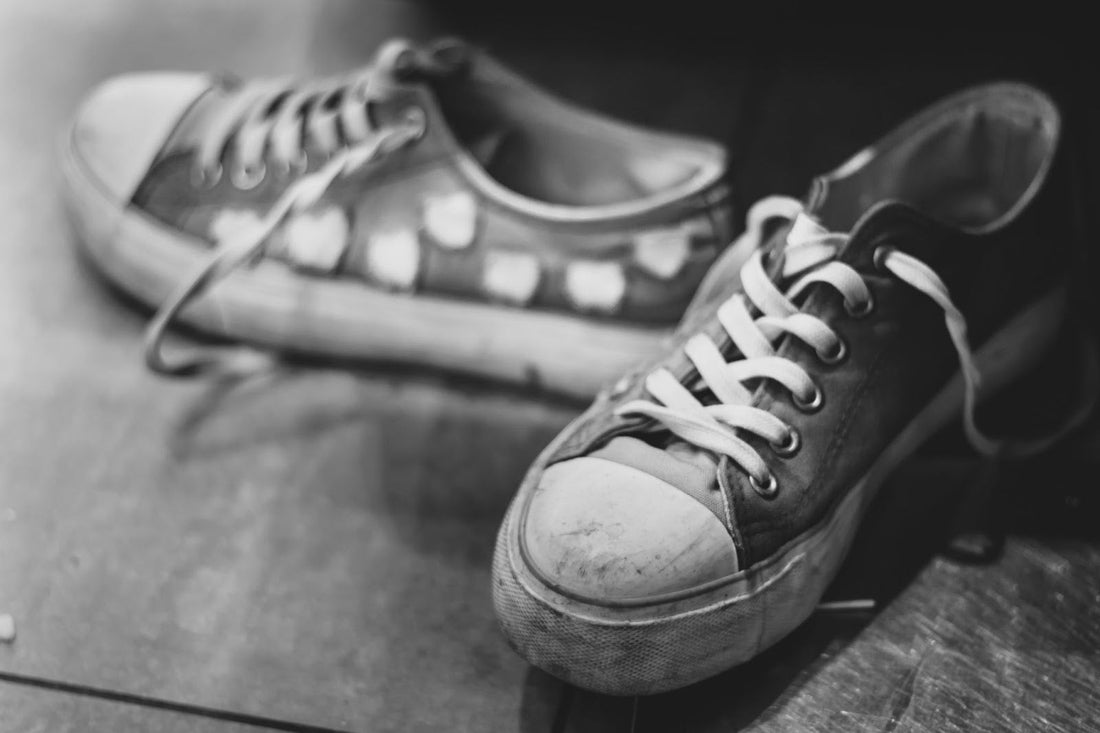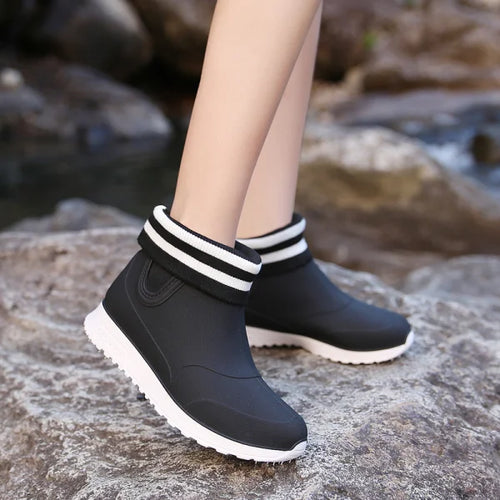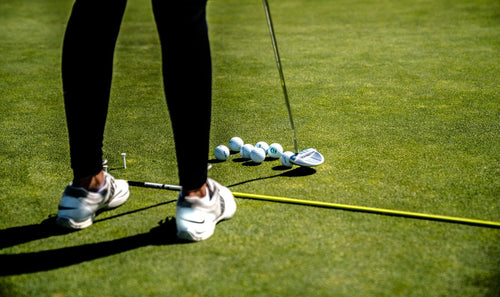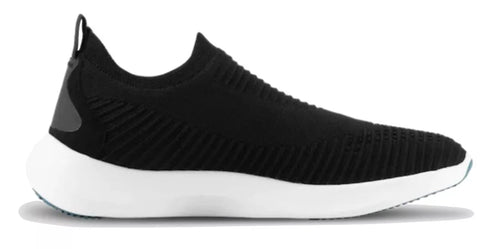When you buy a new pair of waterproof running shoes, you expect that they keep you comfortable, boost your performance, and prevent injuries. But there’s another utility to modern footwear: keeping you safe from infectious pathogens.
Tracking in the mud should be the least of your concerns when you come back home from a long day outside. Instead, hundreds of thousands of bacteria, viruses, fungi, parasites, and other pathogens find their way into your home through your shoes.
But just because you can’t see them doesn’t mean that they’re not a threat.
On the contrary, the pathogens on your shoes can wreak havoc inside your house for you, your family, and your pets.
Luckily, there are different types of shoes sanitizers you can use to completely disinfect your footwear.
Why You Should Sanitize Your Shoes

Ever since the global pandemic, people have swiftly learned the importance of sterilizing and disinfecting themselves, their clothes, and their immediate surroundings. For most people, this is a necessary step before they can enter their homes.
But when it comes to footwear, it turns out that this is something we should have been doing all along.
Think about it: out of all things, your shoes come into contact with the most unclean surfaces when you’re out and about. Even your hands, which can get very dirty, aren’t as vulnerable since you can clean and dry them almost immediately.
But how often do you give your shoes a quick wash with antibacterial soap? Obviously, not that much.
So, can you imagine the kinds of pathogens that hitch a ride on your shoes and eventually make their way into your house?
According to Dr. Charles Gerba, a microbiologist and professor at the University of Arizona, there are over 400,000 bacteria on the outside of your shoe and 2,887 on the inside.
Does that trigger your inner germaphobe?
Well, it gets worse; 96% of the shoes studied in the same research contained traces of fecal matter. The final nail in the coffin was the observation that 90% of the pathogens successfully transferred from shoe to floor upon the first contact.
From there onwards, it's only a matter of the pathogens making their way into your body and wreacking havoc. If you have crawling infants or elderly citizens living in your home, the infected floors become death traps.
Most Dangerous Pathogens Found In Your Shoes
Other pathogens found in your shoes include:
- coli
- Coliform Bacteria
- Serratia Ficaria
- Methicillin-resistant Staphylococcus aureus (MRSA)
- Enterococcus faecalis
- Listeria monocytogenes
Moreover, people in daily healthcare, community, and animal worker settings should practice even more caution. Even if you transit through public transport, walk around in crowded areas, or use public toilets, your shoes can transmit hundreds of types of infectious agents.

Of course, the shoe material and fabric also determines how much bacteria and other pathogens it holds. For example, waterproof running shoes, such as Loom waterproof sneakers, will not retain as much moisture, which is otherwise a breeding ground for bacteria. Similarly, some shoe materials such as merino wool are naturally bacteria-resistant.
But this doesn’t mean that you’re exempt from having to disinfect your shoes.
Also read: Should We Use Insoles for Arch Supports? 5 Myths and Facts You Should Know!
5 Ways to Sanitize Your Shoes
With everything said about the potential dangers of not sanitizing your shoes, things aren’t as bleak as they seem.
Keep in mind that not all pathogens on your shoes are going to be fatal. As for the ones that could potentially impair you, your immune system has got you covered.
But that doesn’t mean you should be complacent—far from it! Here are some of the most effective ways to sanitize, disinfect, and thoroughly clean your shoes.
1. Disposable Disinfectant Wipes
Disinfectant wipes are one of the most convenient and effective shoes sanitizer tools to give your shoes a good wipe-down before you enter your home. These handy disposable wipes do a great job at getting rid of surface-level pathogens and dirt.

However, disinfectant wipes go the extra mile by cleaning and deodorizing your shoes as well.
What’s more, these handy sanitary tools come in portable packaging, which means you can carry them around whenever you step out of the house.
If you’re worried that disinfectant wipes can damage your shoes, don’t be; modern sneakers can withstand the chemicals present in disinfectant wipes. The solution evaporates almost instantly, leaving behind sterile and stain-free shoes.
A word of caution; some disinfectant wipes contain bleach, which can definitely stain and discolor leather, suede, and canvas shoes. To avoid this, simply read the labels and opt for bleach-free options.
The one downside of using disposable disinfectant wipes as shoes sanitizer is the waste. Ready-to-use wipes are meant to be discarded after the first use, which means you will end up generating a lot of environmentally detrimental waste.
2. Ethanol or Isopropyl Alcohol
While most people typically didn’t have medical-grade alcohol just lying around the house, the global pandemic has certainly changed things. If you don’t already know, you can use alcohol to make a DIY hand sanitizer, but it works just as well on any surface — including shoes!

But that doesn’t mean you can use whatever bottle of alcohol you have lying around the house.
Research suggests that isopropyl alcohol and ethanol are the most effective disinfectants, even against coronaviruses. The main difference between these two alcohols is that isopropyl alcohol is dangerous for human consumption while ethanol isn’t.
But regardless of which type of alcohol you choose to use, always remember to dilute it.
The aforementioned research emphasized that using a 62% to 80% solution of either alcohol is much more effective than using just pure alcohol. You can make a 70% alcohol solution by mixing distilled water and alcohol in a 30-70 ratio.
Once again, you shouldn’t use too much of this solution on leather and suede shoes. Alcohol is extremely drying and can damage moisture-loving leather.
3. Disinfectant Spray
These days, there are disinfectant sprays for everything, and shoes are no exception.

Notably, common household disinfectant sprays are often too harsh and therefore not suitable for various shoe fabrics. On the other hand, some disinfectant sprays are made specifically for shoes and ensure that the material does not sustain any damage.
A great option is the 10-second deodorant and disinfectant spray. It contains 53% ethanol and 0.25% other alcohols, which should effectively disinfect your shoes.
But as the name suggests, the spray does more than just eliminate infectious pathogens; it actually deodorizes your shoes and neutralizes any foul odor, even when you wear them later on.
4. Disinfecting Floor Mat
Regular floor mats do well enough to scrape off any bulky mud or dirt spoiling your shoes’ soles. But disinfecting floor mats go above and beyond to vanquish any lingering pathogens.
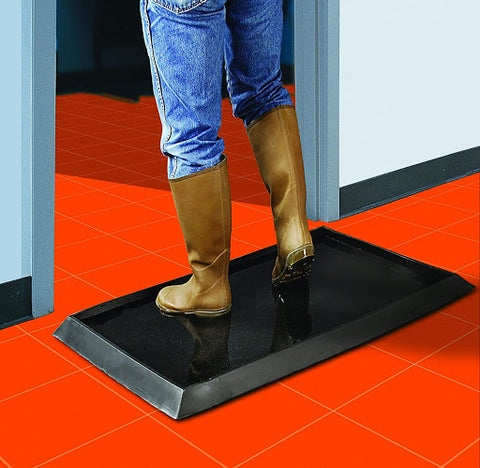
There are different variations of disinfecting floor mats. A tacky floor mat functions like a lint roller for your shoes, removing all dust, hair, pollen, and other debris from the soles. These floor mats are often used in controlled work environments such as labs and food processing facilities, but they are just as useful for your home.
On the other hand, sanitizing footbath mats have a trough-like contraption that you can fill with a disinfecting solution of your choice. Once you step onto the mat, the solution disinfects your shoes while the bristles scrub away dirt and mud.
5. Washing Your Shoes
Arguably the best way to sanitize your shoes is by running them through the washing machine or even hand washing them. In fact, experts actually advise that thoroughly washing your shoes using any detergent effectively gets rid of most pathogens.

For shoes that have a sturdy fabric such as mesh and canvas, the washing machine won’t damage them. However, some shoes, such as those made from leather and suede, fare better with handwashing.
Of course, you can’t wash your shoes every single time you wear them, nor should you. Ideally, you should wash your shoes once every two weeks, or if the situation calls for it.
How to Sanitize Leather and Suede Shoes
Leather and suede shoes have always been a little tricky to maneuver. Sure, they look good. But as all leather shoe owners can confirm, taking care of them is a hassle, to say the least.
The same goes for when you want to sanitize your leather or suede shoes. Things like alcohol, bleach, and even excess water can permanently damage those sweet leather kicks.
But don’t despair; you can still disinfect your shoes using a leather-friendly shoes sanitizer. What’s more, you can DIY the whole process:
- Make a dilute solution of dish soap and distilled water. Make sure the dish soap you use is antibacterial.
- Transfer the solution to a bottle and keep it near your entrance.
- Keep a microfiber towel near the entrance as well.
- Douse the towel in the solution and gently scrub the shoes. Be careful not to oversaturate the shoes with the solution since the suds can remain in the leather.
Conclusion
In light of the global pandemic, people have quickly realized the importance of thoroughly cleaning their environment.
But all that hard work will go down the drain once your shoes track in thousands of infectious pathogens.
In order to keep your house clean and yourself healthy, you need to use some type of shoes sanitizer on your footwear. While machine or hand washing is the most fool-proof way of cleaning your shoes, disinfectant wipes and sprays can do the job just as well.
And remember: when in doubt, just take your shoes off outside.
